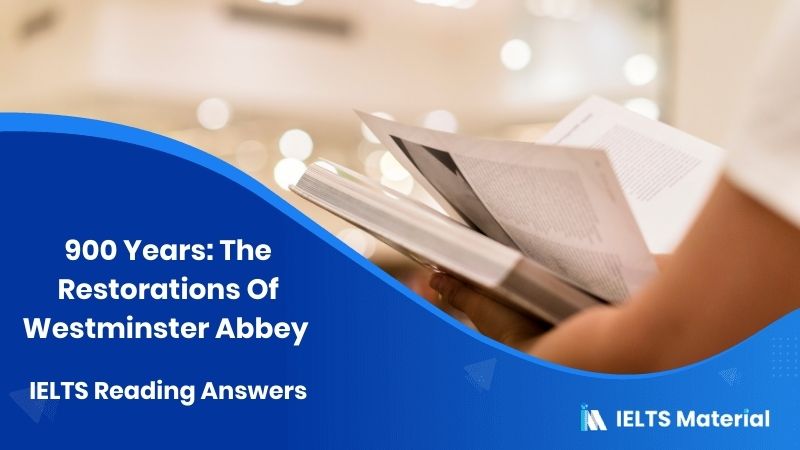The Ring Cycle – IELTS Reading Answers
3 min read
Updated On
-
Copy link
Table of Contents

Limited-Time Offer : Access a FREE 10-Day IELTS Study Plan!
With diligent practice, the IELTS Reading Module can be the top-scoring category for IELTS Aspirants. To score well, you must understand how to approach and answer the different question types in the Reading Module. The Ring Cycle is a real Reading test passage that appeared in the IELTS.
By solving and reviewing Sample Reading Questions from past IELTS papers, you can ensure that your Reading skills are up to the mark. Take the practice test The Ring Cycle below and try more IELTS reading practice tests from IELTSMaterial.com.
Not sure how to answer IELTS Reading Matching Headings questions? Check out the video below for the latest tips and strategies!
For more Multiple Choice Questions practice, take a look at IELTS Reading Multiple Choice Example 1!
The Ring Cycle
You should spend about 20 minutes on Questions 1-13, which are based on the Reading Passage below. Find the practice test with The Ring Cycle PDF here.
Answers
| Question number | Answer | Keywords | Location of keywords |
|---|---|---|---|
| 1 | ix | Dendrochronologists, scientists who study the growth of rings in trees, have successfully constructed long tree-ring records by overlapping the patterns of wide and narrow rings in successively older timber specimens. There are now a dozen or so chronologies in the world that date back more than 5,000 years. | Paragraph B;
Lines 1 – 2 |
| 2 | iii | Recently; an analysis of 383 modern chronologies, drawn from a vast area across Europe, northern Eurasia and North America was published. | Paragraph C;
Line 4 |
| 3 | vii | It is a nice clean story — volcanoes load the atmosphere with dust and aerosol and reflect back sunlight, cooling the earth’s surface. This cooling leads to variations in the density of growth rings in northern conifers. Because there are a lot of other records, it is possible to test the findings from the conifer density record. | Paragraph D;
Lines 2 – end |
| 4 | vi | Given that the defeat of Napoleon’s invasion of Russia in 1812 was famously attributed to ‘General Winter’ | Paragraph F;
Last line |
| 5 | i | According to Briffa, the period 1810-20 was the coldest in the last millennium, so we begin to see a combination of three unusual elements in less than ten years — exceptional earthquake, exceptional volcanic eruption, and exceptional cold. | Paragraph F;
Line 7 |
| 6 | viii | Obviously, the case of 1816 and the years just before and after it is relatively recent and well documented. | Paragraph G;
Line 1 |
| 7 | B | Dendrochronologists, scientists who study the growth of rings in trees, have successfully constructed long tree-ring records by overlapping the patterns of wide and narrow rings in successively older timber specimens. | Paragraph B;
Line 1 |
| 8 | C | The wood hewn from them and preserved through the centuries is slowly beginning to yield at least circumstantial evidence | Paragraph G;
Line 7 |
| 9 | F | These records, normally constructed in a restricted area, using a single species of tree, are year-by-year records of how the trees reacted to their growth conditions | Paragraph B;
Last line |
| 10 | A | What we see from this comparison is that the oaks clearly do respond to the volcanoes in some cases (in 1602, 1740 and 1816, for instance), but nothing like so clearly in others. Immediately it becomes apparent that the conifers tell only part of the story. | Paragraph E;
Line 5 – 6 |
| 11 | A | Take the case of 1816, called the ‘year without a summer’ because of the terrible unseasonable cold and the crop failures that ensued. It has long been known that the primary cause of the cooling was the massive eruption of Tambora, east of Java, in 1815. | Paragraph F;
Lines 1 – 2 |
| 12 | B | However, dendrochronology allows us to investigate the effects of such events geographically, indeed globally. We can interrogate the trees in areas where there is no historical or instrumental record. | Paragraph G;
Lines 2 – 3 |
| 13 | D | Further back in time, dendrochronology is almost the only way to reconstruct abrupt environmental events and perhaps throw new light on far darker moments in human history. | Paragraph G;
Line 4 |
Check More IELTS Reading Answers
Also check :
Practice IELTS Reading based on question types

Start Preparing for IELTS: Get Your 10-Day Study Plan Today!
Explore other Reading Topics

Janice Thompson

Janice Thompson
Recent Articles

Kasturika Samanta

Kasturika Samanta

Janice Thompson







Post your Comments